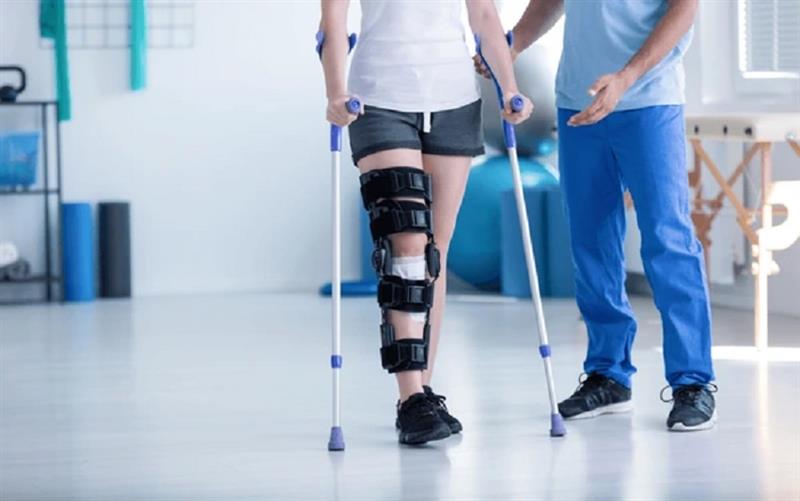
Medical devices known as walking crutches are used to help patients or the elderly who are unable to maintain their own weight on their legs using their legs. These are mobility aids or walking aids used by elderly people or patients who are unable to walk and rely on their upper bodies to maintain their body weight. Crutches are typically needed to support your legs, such as following surgery or as you age and experience limb weakness. Crutches are only useful if you have mild leg weakness or pain.
Selecting the appropriate walking crutch is crucial, as there are various varieties on the market. Crutch palsy, which damages the nerves beneath the arms and leaves the hands, wrists, and forearms weak, can be brought on by using the wrong kind of crutches. Crutches that fit properly can assist prevent problems and increase safety. Let's examine the many types of crutches that are on the market and how they are used.
1. Underarm or Axillary Crutches:
These are the most common type of crutches and are typically used by placing the pads under the arms while gripping the handgrips. The user bears their weight through their hands and upper body while walking.
- These crutches consist of padded platforms that go under the arms, with handgrips at the top for the user to hold onto.
- Users typically place the pads under their arms and grip the handgrips while walking.
- The weight of the user is primarily supported by their hands and upper body, with some pressure also on the underarm pads.
- Axillary crutches are widely used and are suitable for various conditions where temporary or permanent assistance with walking is required.
- Proper adjustment and positioning of the crutches are essential to prevent discomfort or nerve damage in the armpits.
2. Forearm or Loftstrand Crutches:
Also known as "forearm crutches," these have cuffs that wrap around the forearms rather than under the arms. Users typically grip the handgrips while the cuffs support their forearms. This type of crutch provides more stability and control for some users.
- Users place their forearms into the cuffs and grip the handgrips while walking, providing more stability and control compared to axillary crutches.
- Forearm crutches are often preferred by individuals who need greater support and stability or have difficulty bearing weight on their hands and wrists.
- Proper fitting of the cuffs is crucial to ensure comfort and prevent slippage during use.
3. Platform Crutches:
These crutches have platforms for the user's forearms to rest on, rather than grips. They're often used by people with limited hand strength or dexterity.
- These crutches feature platforms or troughs for the user's forearms to rest on instead of traditional handgrips.
- Users place their forearms on the platforms, which provide support and stability while walking.
- Platform crutches are beneficial for individuals with limited hand strength or dexterity, as they do not require gripping handgrips.
- Adjustability of the platform height and angle is important to accommodate different arm lengths and user preferences.
4. Leg Support Crutches:
These crutches include support for the leg, often used by people with certain types of injuries or conditions where weight-bearing on the leg is prohibited.
- These crutches incorporate additional support for the leg, often used by individuals with certain injuries or conditions where weight-bearing on the leg is restricted.
- Leg support crutches may include padding or braces to support and immobilize the affected leg while walking.
- They provide added stability and assist users in maintaining balance and mobility while minimizing pressure on the injured or weakened leg.
- Proper fitting and alignment of the leg support are essential to ensure comfort and effectiveness.
5. Mobile or Wheeled Crutches:
These crutches have small wheels on the bottom, allowing users to move more smoothly and quickly. They're often used by people with temporary injuries who still need assistance with walking but want more mobility than traditional crutches provide.
- These crutches feature small wheels attached to the bottom, allowing users to move more smoothly and with less effort than traditional crutches.
- Users push the crutches forward, propelling themselves forward with the wheels while maintaining balance and stability.
- Wheeled crutches are suitable for individuals with temporary injuries who still require assistance with walking but desire greater mobility and convenience.
- They can be used indoors and outdoors on smooth surfaces but may not be suitable for rough terrain or uneven surfaces.
- Users should be cautious when using wheeled crutches on slopes or inclines to prevent loss of control.